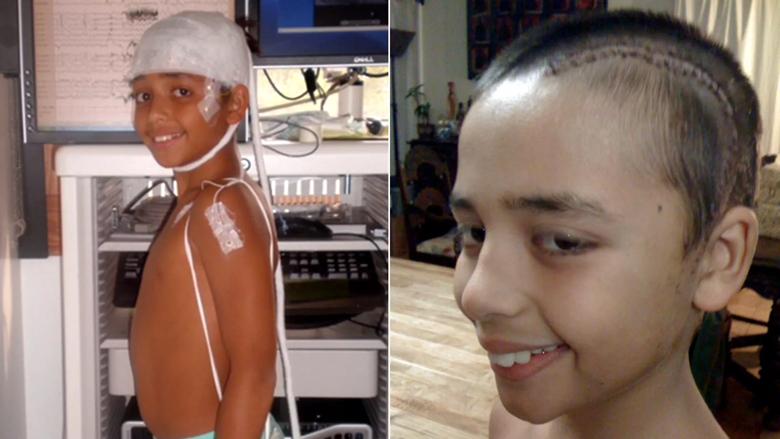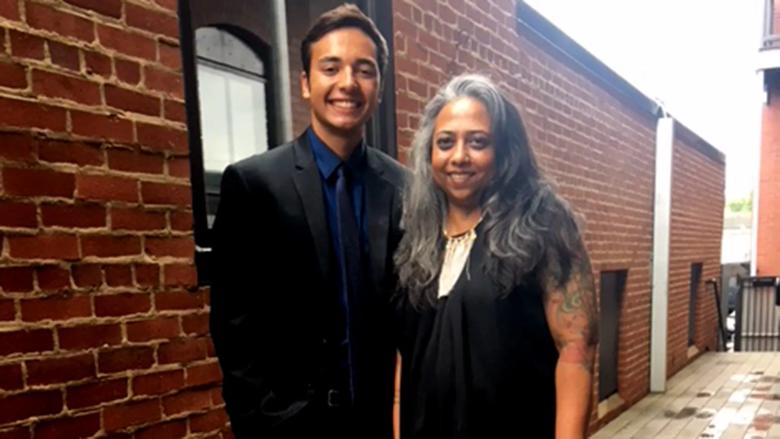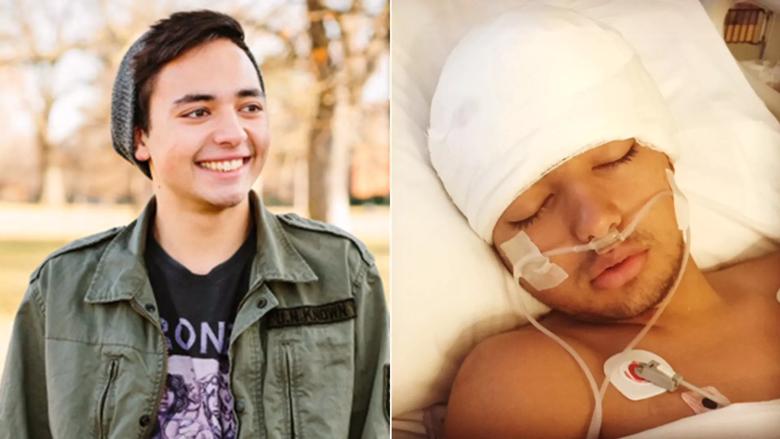The patient was part of a research program at the Cleveland Clinic Epilepsy Center
Cleveland Clinic News Service | 216.444.0141
We’re available to shoot custom interviews & b-roll for media outlets upon request.
CCNS health and medical content is consumer-friendly, professional broadcast quality (available in HD), and available to media outlets each day.

An arsenal of medications didn’t help.
Neither did epilepsy surgery, when he was just 12 years old.

By the time he was 18, Ravi Stewart was having as many as 80 epileptic seizures each day. During a bad spell, he would miss day after day of high school, sleep for hours on end, and struggle to retain short-term memory. Plus, the prevalence of episodes made it unsafe for him to drive a car and prompted the ridicule of classmates.
“I was definitely bullied a lot,” recalls Ravi, now 19. “And I was like the only kid in school who wasn’t driving. I was disappointed because no matter what we tried, nothing changed.”
RELATED: How a New Tool Can Help Your Decision About Epilepsy Surgery
Frustrated by epilepsy-induced academic challenges, Ravi focused on physical pursuits like cross country and skateboarding. Desperate for answers, he and his parents sought the assistance of the Cleveland Clinic Epilepsy Center, one of the largest, most comprehensive programs in the world for the evaluation and treatment of this neurological disorder.
And within weeks of Ravi undergoing an evaluation, and being approved to participate in one of the Center’s breakthrough research programs, the seizures were gone.
All of them.
“He’s a whole new person,” exclaims his mother, Sangeeta. “For years, I watched my child struggle on so many different levels. And now, to have this man emerge who’s so optimistic and ready to conquer the world. It’s amazing.”

The key to unlocking the mystery of what was causing Ravi’s epileptic seizures was the use of an ultra-high-field 7-tesla magnetic resonance imaging (7T MRI) test available to Cleveland Clinic patients with epilepsy since 2014, as part of the aforementioned research program.
RELATED: Here’s What 7T Can Bring to the Table
While standard 3T MRI has been demonstrated to be a reliable and accurate indicator for many of the pathologic findings underlying epilepsy, it is not able to detect all malformations. In Ravi’s case, the 7T MRI – coupled with a battery of video-EEG, PET, MEG and ictal SPECT tests – confirmed the exact location of a brain lesion that was triggering the seizures.
“The 7T scan clearly defined the lesion, which was located in close proximity to the speech areas of his brain,” says Dr. Jorge Alvaro Gonzalez-Martinez, MD, PhD, a neurosurgeon with the Cleveland Clinic who performed Ravi’s operation. “That gave us the confidence to go in and operate, in a safe way.”
RELATED: Multimodal Approach to Epilepsy Surgery: The Power of Pairing 7T MRI with SEEG
Just a few weeks later, Cleveland Clinic surgeons used the information from the cutting-edge neuroimaging techniques to plan and perform surgery to remove the lesion. Although the lesion was dangerously close to the eloquent cortex region critical for speech production, the delicate brain surgery – performed while Ravi was awake – was successful.

Since the surgery, Ravi has had just one recurrence of a seizure. With a minor medication adjustment, the seizures have subsequently stopped. He has been able to finish high school, enter college to study nursing and live a normal life – at last.
“For a long time, I didn’t think I was going to graduate high school or go to college,” states Ravi, who remains an avid skateboarder. “My attitude has changed. I’m definitely a lot happier.”
Follow @CleClinicNews on Twitter for the latest inspiring patients stories, medical innovation and breakthrough research.
Cleveland Clinic is a nonprofit multispecialty academic medical center that integrates clinical and hospital care with research and education. Located in Cleveland, Ohio, it was founded in 1921 by four renowned physicians with a vision of providing outstanding patient care based upon the principles of cooperation, compassion and innovation. Cleveland Clinic has pioneered many medical breakthroughs, including coronary artery bypass surgery and the first face transplant in the United States. Cleveland Clinic is consistently recognized in the U.S. and throughout the world for its expertise and care. Among Cleveland Clinic’s 82,600 employees worldwide are more than 5,786 salaried physicians and researchers, and 20,700 registered nurses and advanced practice providers, representing 140 medical specialties and subspecialties. Cleveland Clinic is a 6,728-bed health system that includes a 173-acre main campus near downtown Cleveland, 23 hospitals, 280 outpatient facilities, including locations in northeast Ohio; Florida; Las Vegas, Nevada; Toronto, Canada; Abu Dhabi, UAE; and London, England. In 2024, there were 15.7 million outpatient encounters, 333,000 hospital admissions and observations, and 320,000 surgeries and procedures throughout Cleveland Clinic’s health system. Patients came for treatment from every state and 112 countries. Visit us at clevelandclinic.org. Follow us at x.com/CleClinicNews. News and resources are available at newsroom.clevelandclinic.org.
Editor’s Note: Cleveland Clinic News Service is available to provide broadcast-quality interviews and B-roll upon request.